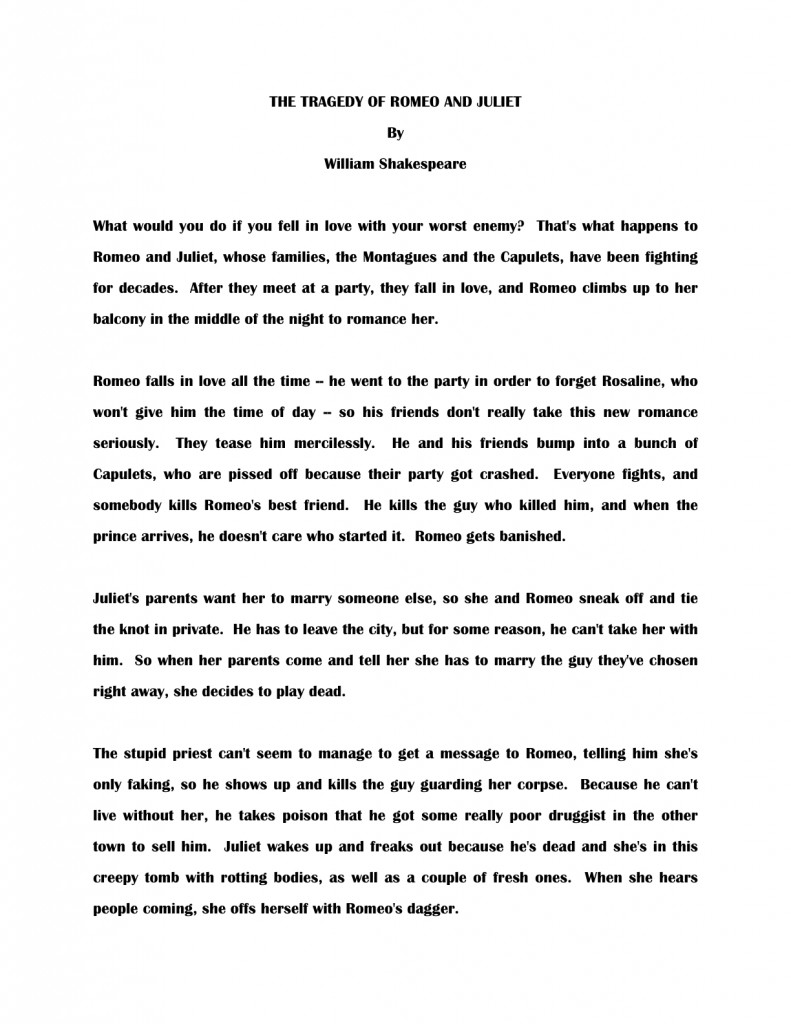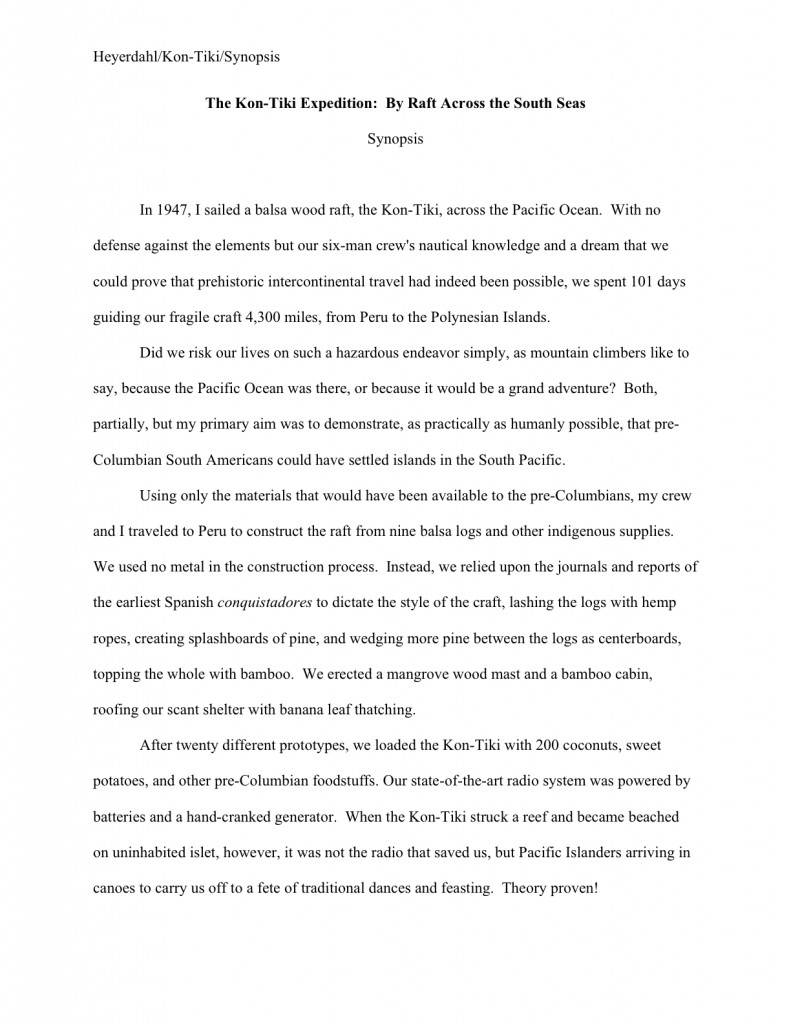





Answer: not a query packet, synopsis packet, or even contest synopsis, necessarily. All of those are read only sometimes.
That double-take you just did was well-justified, but before I elaborate on that rather lame joke, allow me to begin today with some completely wonderful news about a long-time member of the Author! Author! community: congratulations to Kate Evangelista, who just landed an agent for her YA novels. Well done, Kate!
Keep that good news rolling in, everybody; there are few things I enjoy more about blogging than announcing my readers’ literary triumphs. It’s a long, long road from initial bright idea to publication, campers, and the more we can enjoy other one another’s successes, the happier we shall all be as we keep pushing forward.
Back to that double-take you did at the top of the post — and had I mentioned that it was well-justified?
“You drive me to distraction, Anne,” synopsizers across this fine land of ours wail, rending their garments. “Here we have been spending post after advice-heavy post on perfecting the darned thing, and now you’re raising the possibility that after all of that blood, toil, tears and sweat I’ve expended, no one will read it? Just what kind of sick torture-fest are you running here in this autumn of Paloozas??”
Now, now, I didn’t suggest that synopses are never read. Once you’re signed with an agent, s/he will undoubtedly read your synopsis of your next book.
Before that point, however, it’s a bit hit-and-miss. Although agents routinely ask submitters to send along a synopsis with requested manuscript pages, and agency submission guidelines frequently call for one to be tucked into a query packet, it’s seldom the first thing read. And if Millicent the agency screener has already decided yea or nay on a book project, why should she invest another minute or two in reading the attached synopsis?
You were doing further damage to your garments by the end of that last paragraph, weren’t you? “But Anne,” some of you protest through gritted teeth, “you just said yourself that they ask us to send the wretched things; it’s not as though any sane person would sit around tossing off synopses for pleasure. Why would they request a synopsis if they don’t intend to read it?”
Ah, but they do. At least, they intend to read some of them.
Allow me to explain before you rip that nice shirt any further. Let’s take the synopsis tucked into the query packet first. As most of us in the Author! Author! community know to our sorrow, it’s Millicent’s job to make up her mind pretty quickly about queries.
As in less than 30 seconds. You’ve already shredded a few outfits over that one, I’m assuming, and come to terms with it.
If you haven’t, before you get your hackles up about all of your hard work on your query receiving that little scrutiny, do the math: If the average agency receives somewhere between 800 and 1500 queries per week — or more, if it has a compelling website featuring an easy-to-fill-out submission form that allows a querier to bypass the tedium of writing a query letter — and each takes 30 seconds to open and read, that’s between 6.5 and 12.5 hours of agency time every week just to read them. And that’s not counting all of the additional hours to read requested materials.
If that doesn’t seem like a huge time investment to you, consider this: agencies do not make any money at all from reading queries; they make money by selling the work of their already-signed clients. So while they might eventually see some cash from taking on any writer in today’s query pile, but that’s going to take time.
And that, in case those of you who have been thumbing through one of the standard agency guides recently had been wondering, is why many agencies do not accept queries at all. Instead of investing the dosh in setting at least a half-time employee to screen queries, they obtain new clients through recommendations from current clients, or by blandishing authors unhappy with their current agents into switching.
Oh, you’d be surprised at how many agented authors are looking to switch at any given time. Particularly recently, given the difficulty of selling adult fiction over the last couple of years. There’s only a certain number of times even the most patient among us can hear, “This is great — can you turn it into YA, preferably with the inclusion of vampires and/or zombies, within the next few weeks?” before beginning to cast longing eyes elsewhere.
Back to Millicent’s comparatively writer-friendly agency. Let’s say that the agency in question calls for a 1-page synopsis to be included in every query packet. If she read all of them in their entirety, even assuming that each took her only an additional minute, that would raise the agency’s investment in query processing another 20 to 37.5 hours per week.
Or, to put it another way, devoting a full-time employee, rather than a half-time one. Given the additional cost, what do you think the probability is that a newly-trained Millicent will be directed to give every query synopsis submitted a thorough once-over?
Uh-huh. Depressing, but logistically understandable, I’m afraid, in the aforementioned tough sales environment.
So how will Millicent decide which to read and which to skip? Glad you asked:
1. The ones that are obviously incorrectly formatted.
The vast majority that are not professionally formatted would be the obvious ones to ignore, if she’s in a rush. For a busy Millicent, the more of these, the better. In fact, a Millicent working for a very popular agent might well adopt the even higher standards typically utilized by literary contest judges: the reject-on-sight group would include synopses not in standard format (and if you were not aware that there is a standard for such submission-packet inserts, by all means, keep reading), those in odd typefaces, and those in business format (i.e., single-spaced and without indented paragraphs).
Before any of you e-queriers panic: if an agency’s submission guidelines ask queriers to include a synopsis of any length in the body of an e-mailed query (it’s exceedingly rare that any will ask for it as an attachment, due to the likelihood of computer virus transfer), it’s okay for that synopsis to be formatted like an e-mail, with single spacing and non-indented paragraphs, although you are also welcome to insert it in standard format. However, if the guidelines specify imbedding a writing sample or the first few pages of the book, that text should be in standard format.
Everybody clear on that? Yet another reason, if you needed one, to read every agency’s submission guidelines very, very carefully before you send them so much as a syllable of your writing.
2. The ones that she can tell at first glance need work.
Typos can really cost you here, as can those dropped words that so often result from repeated revision. Yet another reason to both spell-check and read every word in your packet or contest entry IN ITS ENTIRETY, IN HARD COPY, and OUT LOUD.
Why print out an e-query before sending? Long-time readers, chant it with me now: because it’s much, much easier to miss a typo, missed word, or logic problem when proofing on a backlit screen.
3. The ones attached to query letters that have already prompted a rejection response
Many, if not most, queriers operate on the rather sweet assumption that Millicents — or, in most of these pretty mental pictures, their bosses, the agents to whom the queries are addressed — will conscientiously read every comma and exclamation point in a query packet before making a determination whether to ask for the manuscript or not. They simply don’t have the time.
Or, to put it as Millie herself might: if already decided to give the project a pass, why spend even a few more seconds on the query packet? She has dozens more to get through before lunch.
I hear you grumbling about that. In practice, though, that incentive not to agonize too long over a decision can work in the writer’s favor. Like so…
4. The ones attached to query letters that have already prompted a positive response
This, too, is a time-management issue: Millicent doesn’t have a tremendous reason to take the time to peruse the synopses accompanying queries that immediately caught her interest. If she already knows that she wants to see the manuscript, why invest an additional unnecessary minute on the synopsis?
So which ones virtually always get read? The ones where Millicent is genuinely on the fence about requesting pages — or Mehitabel the contest judge is trying to break a tie between a couple of promising entries.
Which means, in practice, that in that relatively small fraction of cases, the synopsis is a very, very important writing sample.
Not clear on why? Okay, here are two different 1-page synopses — and continuing my trend of summarizing works in the public domain, I’ve tackled ROMEO AND JULIET. Again, if you are having trouble reading any of these examples, try double-clicking on the image and either enlarging it in a new window or downloading it to your desktop. (Also again: if I find out that anyone is lifting any part of what follows and turning it in to a freshman English teacher, noggins will be rapped mercilessly.)
Wiggle your tootsies into Millicent’s moccasins, and tell me which is more likely to induce her to tumble down on the by Jove, I’d like to see this manuscript side of the fence, and which would send her reaching for the stack of form-letter rejections:

Or:

Both summarize the plot in a single page, but a harried Millicent probably would not read even so much a line of that second one. An understandable choice, right: there’s really no contest here, is there? (If there was any hesitation at all about your shout of “By jingo, YES!” or if you’re perplexed about why the bad example does not have indented paragraphs and the good example does, please rush with all possible dispatch to the SYNOPSIS ILLUSTRATED and HOW TO FORMAT A MANUSCRIPT categories on the archive list at the bottom right-hand side of this page.)
Unfortunately, on any given day, a Millicent working at an agency that expects synopses to be included in a query packet would see many, many more of the second type than the first. It makes her job significantly easier and speedier, of course, because she barely would have to glance at the second in order to decide to reject it.
Is that loud rapping sound echoing out there in the ether a good third of your tapping your feet impatiently? “You can stop bludgeoning that equine corpse anytime now, Anne,” a few of you snort, and with some justification. “I already know that presentation counts. I’m looking for more insight into how to improve my synopsis here.”
I was just getting to that, foot-tappers, when you jumped the proverbial gun. But since you are so eager, I’m going to turn the question back to you: setting aside the obvious formatting and presentation problems — everyone caught the lack of slug line, block-justified paragraphs, and oddball typeface choice, right?— what else would strike Millicent as less professional about the second example if she did go ahead and read it?
How about the fact that it’s terribly vague? Compared with the first example, it’s stuffed to the gills with generalities — and that makes this story downright hard to follow. Yes, the first example contains summary statements, but because they are grounded in specifics, Millicent will be able to follow what is going on with ease. Not only that, but by showing her something unusual in the synopsis, details that she won’t have seen in any other synopsis that day, week, or, ideally, year, the first version might give her the impression that this Shakespeare person might actually be able to write.
Also, who are the characters here? This guy is hardly an adequate character-identifying phrase. And where does this story take place? What century is it? Why are these people using poison and daggers instead of guns? Et cetera, et cetera, et cetera.
My point, should you care to know it: Millicent’s assumption that the unprofessional formatting was representative of the polish of the synopsis in general would have been quite accurate in this instance. Just something to ponder the next time you find yourself resenting how quickly the average query packet gets screened.
Another factor that Millie is going to work into her ultimate yea-or-nay decision is whether the manuscript in question seems to be a good fit for her agency. Again, most aspiring writers simply assume that the quality writing and the marketability of the book’s premise are the only decisive factors, but that’s not true: like agents, agencies specialize. If neither already has the connections in place to sell a particular book project — or, more commonly in this market, the agent doesn’t believe she could sell it right now — Millicent will be under instructions to pass.
Sort of changes how you look at any rejections your book may have racked up recently, doesn’t it?
Because she does have to consider fit for the agency and the current market, the synopsis can be a make-or-break document. The descriptive paragraph in the query letter may not have given her a clear enough sense of what the book is about, after all, or she may be a trifle skeptical about how the premise offered in the query would play out over the course of an entire book. And frankly, if the query letter did not include the book category — and a good 90% do not, despite my years of griping to aspiring writers everywhere on the subject — she may need to read the synopsis to figure out what kind of book it is.
Which provides me with a perfectly glorious segue into one last iteration of a principle that has reared its helpful-but-ugly head throughout the entirety of Synopsispalooza: what makes a good synopsis for one type of book will not necessary work for another book category. That being said, all synopses should share some species similarities. Feel free to shout them along with me:
(a) regardless of the tense of the manuscript, the synopsis should be in the present tense, and
(b) even if the manuscript is written in the first person, the synopsis should be written in the third person, UNLESS
(c) the manuscript being synopsized is a memoir, in which case the synopsis should be written in the past tense and the first person.
Everyone clear on all that? I see most of you nodding, but so that the notion that one or two of you might find this somewhat convoluted rule a trifle confusing won’t keep me up fretting in the dead of night, I’ve come up with a final few concrete examples. First, let’s take a gander at a synopsis for one of the best-selling memoirs of the 20th century:

It only makes sense for the author (well, not the author, in this instance, since I’m the one who wrote this little gem, but play along with me here) to synopsize his work in these terms, right? He’s describing something that happened to him, a story that only he could tell. In fact, a large part of his platform is that only he and five other people could possibly give a first-person account of this remarkable voyage.
As an interesting contrast, let’s next take a peek at the synopsis for a novel that’s written as though it were a memoir: in the first person and as if the author were actually the titular woman’s nephew.

See how the use of the proper tense and voice for a fiction synopsis renders it instantly plain that this book is a novel, not a memoir? That’s extremely useful for Millicent: if the query letter falls into the oh-so-common traps of not mentioning whether the book is fiction or nonfiction (you’d be astonished at how common that is) or failing to state up front that it’s based on real events, she could know right away from the synopsis into which book category it should fall.
Everyone with me so far? Please pipe up, if not: this is counter-intuitive stuff.
Oh, and in answer to what a panicked few observant souls out there just thought very loudly: yes, the slug line in that last example was entirely in capital letters; some writers prefer to do it that way, but it not the only way it can be done. Personally, I prefer lower-case — in the e-mail age, all caps comes across to some readers as shouting — but feel free to use either that looks best to you. Just make sure be consistent between the synopsis and the manuscript.
Speaking of manuscripts, while the query synopsis is intended to prompt Millicent to ask to see the manuscript, a synopsis tucked into a submission packet of requested materials serves a slightly different purpose — or rather, a couple of different purposes, potentially. Which of those purposes is operative determines how likely the synopsis is to get read.
Again, the crucial factor here is saving time. If a synopsis accompanies a partial manuscript, Millicent will seldom read it before scanning the requested pages of the book. Why? Well, if the opening pages don’t grab her, she’s going to reject the submission, right? So why would she invest several minutes in perusing a synopsis for a manuscript she’s already decided to reject?
By the same token, it’s not necessarily in her interest to read it if she likes the partial manuscript. Oh, she might be curious about what happens next, but isn’t far and away the best way to find out to request the rest of the manuscript?
Generally speaking, the shorter the number of requested pages — and this applies equally well to query packets for agencies that ask for a writing sample up front, by the way — the more likely Millicent is to read the submission synopsis.
Do I sense some head-scratching out there? “But Anne, a lot of agents ask for a synopsis even when they request the entire manuscript. But by the logic above, why would Millicent bother to read the synopsis when she has the whole shebang in front of her?”
Good question, head-scratchers: often, she won’t. But her boss might want to take a gander at it before reading the manuscript herself, and she certainly would want to have that synopsis on hand when she picks up the phone or sits down and writes an e-mail to an editor about your work.
Who’d have thought that something so annoying could be so beneficial down the line? Polishing your synopsis is not only good short-term marketing strategy, but also an excellent long-term investment in your writing career.
Oh, you hadn’t thought beyond the synopsis for this book? Why, you are in this for the long haul, aren’t you? This isn’t the only book you’re ever planning to write, is it?
Before I wrap up this post — and Synopsispalooza — I want to tackle one other common synopsizer’s concern, a puzzlement particularly likely to strike writers of SF, fantasy, and YA. Let’s let intrepid archive-comber Brian express it in his own terms.
I’ve more or less finished polishing up my synopsis and am wondering about a nitpick. The book ending doesn’t sound particularly like an ending in synopsis form, for the reason that the book is intended to be part of a series and the ending leads directly into the beginning of the next book. And it sort of ends on a cliffhanger too. I’m worried that Millicent may mistake this as my having committed the cardinal sin of leaving out the ending. I mentioned in the query letter that the book was part of a series, but should I convey this in the synopsis as well?
Thanks for bringing this up, Brian — you are entirely right to be worrying about omitting an ending, at least in a synopsis longer than 1 or 2 pages. And why might that be a problem in a longer novel synopsis, campers?
If you immediately bellowed, “Because part of what a 3-, 4-, or 5-page synopsis is expected to demonstrate is that I can indeed plot out an entire book!” award yourself a gold star for the day. Nay, the series: you’ve obviously been paying close attention.
Even in the face of that imperative, though, a series-writer should not make reference to the next book in the synopsis. To an agent or editor considering only the first book, it would necessarily come across as a touch presumptuous, not to say irrelevant. Besides, the synopsis is not the proper place for this information.
Where is, you ask? Well, that’s kind of a tough question at the query or submission stage. In theory, the fact that the book is part of a series should be irrelevant: if they’re not grabbed by the story in Volume I, they’re not going to be interested in seeing Vols. 1-6, either.
In practice, however, there are many book categories in which a premise having series potential might in fact be quite relevant to Millicent’s assessment of its marketability. If you happen to be writing in a category where series are quite common — say, SF, fantasy, or YA — you might want to work the information into your query letter. Try working it into the marketing paragraph: The first book in a three-volume series, MARS ON A BUDGET will appeal to readers interested in intergalactic travel.
But under no circumstances does should you mention the other books in the synopsis. Concentrate instead upon showcasing what renders this book unique — and making its plot in book sound like a good story, beginning to end. To pull that off, you’re going to have to find away to tell the story of Book #1 in a way that is dramatically satisfying.
Which the first book of a series would need to be in order to prompt readers to want to rush out and buy the next, right? It’s a common misconception that a cliffhanger alone will achieve this effect, but let’s face it, unless the reader is drawn into the story long before the end, he’s not going to read as far as that suspenseful ending.
One reader most assuredly will not: Millicent. Thus, the series-writer’s goal in a query or submission synopsis for the first book should be to find a way to make the ending of Book #1 sound like
(a) it wraps up the plot of this book (not the series) in a satisfying manner, even if the manuscript itself does not tie up all of the loose ends,
(b) if the reader did not immediately pick up a sequel (which he will not be able to do right away, since most series are published sequentially, not simultaneously), the story could stand on its own, and
(c) you’re not counting on subsequent books in order to make sense of the storyline in Book #1 retroactively, as surprisingly many series synopses imply.
In other words, pretend it’s not the first book in a series, but a stand-alone novel, and write the synopsis accordingly.
There’s no other sensible way to go about it, really. Remember, while an agent or editor may base her decision whether to read Book #1 upon the synopsis (or, more likely, whether to ask for the rest of Book #1 after having read a partial), she will be basing her decision to read Book #2 upon Book #1, not upon a synopsis for Book #1.
Concentrate on garnering interest in one book at a time. When your adoring new agent is clamoring for you to produce synopses for the next five books in your series because an editor fell in love with Book #1, that will be the time to worry about showing how all of the stories tie together.
And that’s it for Synopsispalooza, folks. Kudos to you for knuckling down and learning this challenging-but-essential writerly skill. When you’re effortlessly tossing off the synopsis for your eighth book while your agent eagerly waits for it, you’ll be awfully glad you took the time now figure out how it’s done.
My, I have high expectations for you, don’t I? The agent you deserve will as well. Take it as a compliment to your talent — and the seriousness with which you have chosen to develop it.
Speaking of things you might want to get a head start upon: this weekend, I shall be guiding all of you through the mysteries of the author bio. Increasingly, agencies are requesting these in submission packets, and even in query packets — and even if the agent of your dreams doesn’t ask you for yours until your manuscript is ready to head out the door to editors, you’ll be much, much happier if you don’t try to crank it out at the last minute. Like a well-crafted synopsis, it benefits from advance thought.
Hint, hint. Keep up the good work!


















